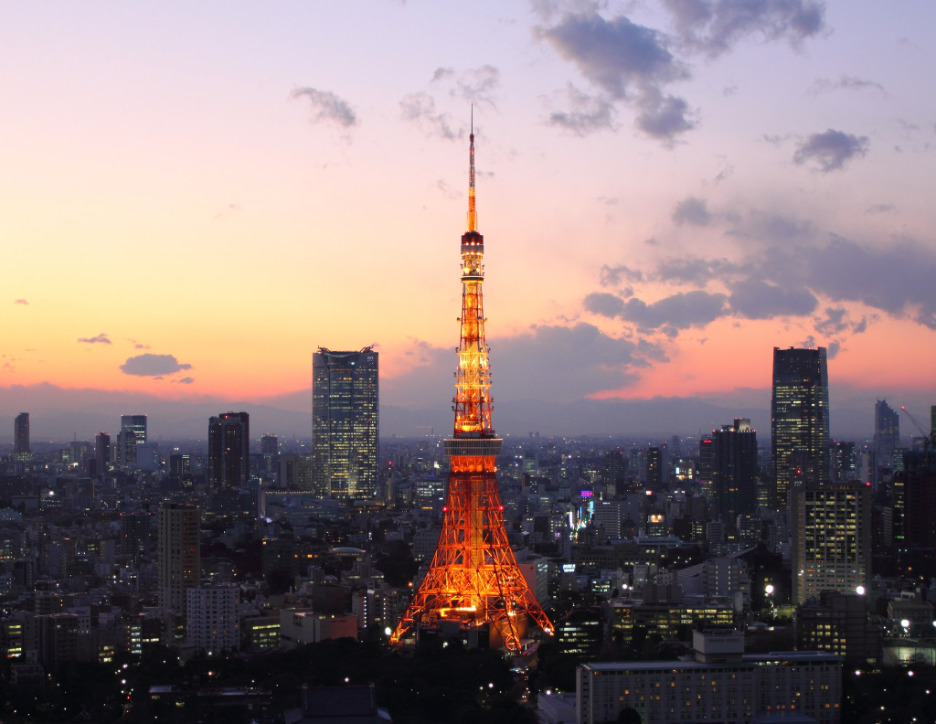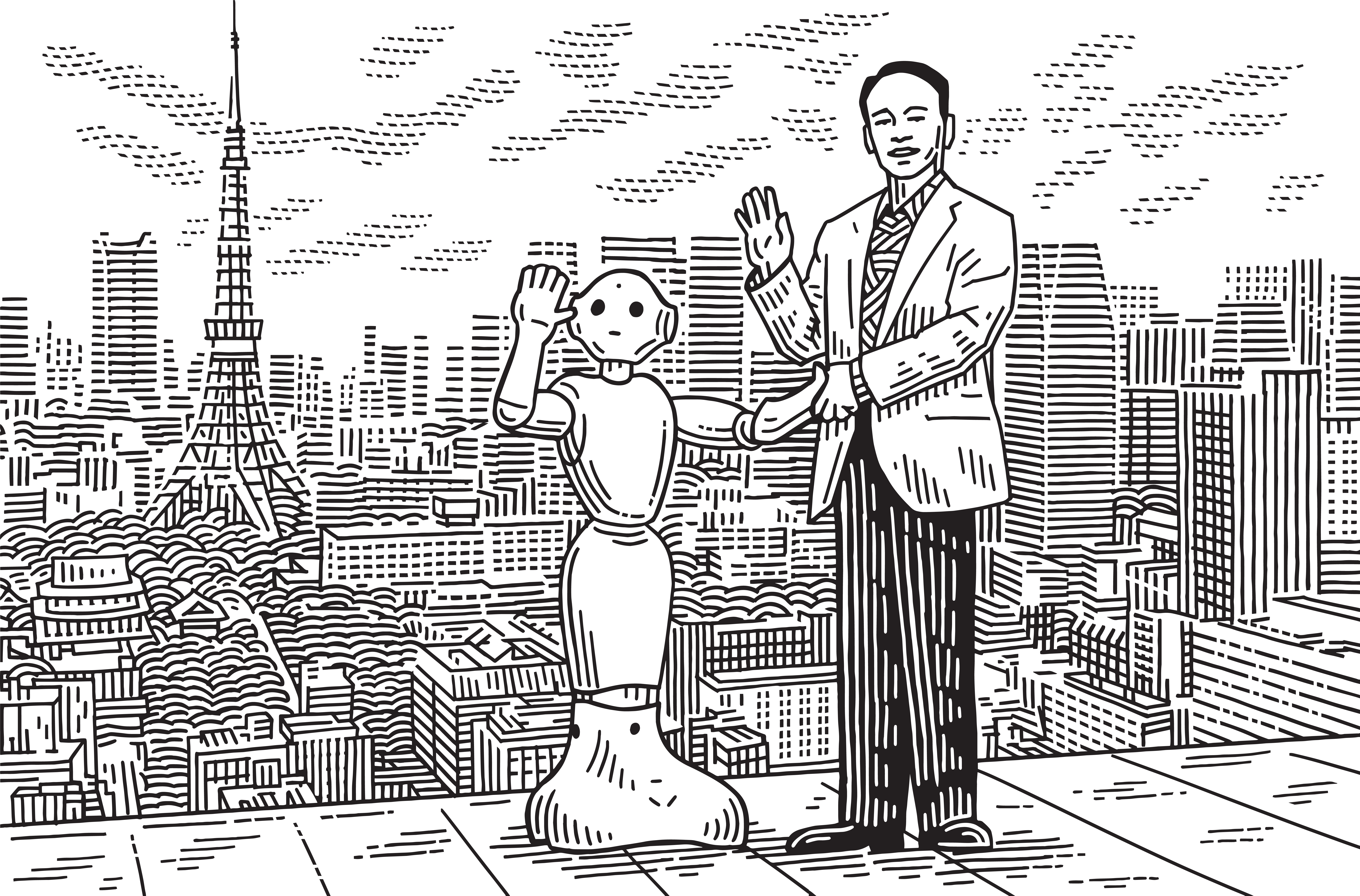Today marks the thirtieth installment in a series of articles by HumanProgress.org called Centers of Progress. Where does progress happen? The story of civilization is in many ways the story of the city. It is the city that has helped to create and define the modern world. This bi-weekly column will give a short overview of urban centers that were the sites of pivotal advances in culture, economics, politics, technology, etc.
Our thirtieth Center of Progress is Tokyo, which, after it was nearly destroyed during World War II, was rapidly rebuilt and reinvented itself as a world leader in manufacturing and technology.
Today, Tokyo is its country’s economic center and the seat of the Japanese government. The city is famously safe and prosperous. It is renowned for its glamor and cosmopolitanism. The Greater Tokyo Area is currently the most populous metropolitan area in the world, boasting well over 37 million residents. As our final Center of Progress, Tokyo’s large population is appropriate because, as in every city, it is the people who live there who drive progress and create wealth. And the more people, the merrier—a finding also backed up by empirical research.
Situated on Tokyo Bay, the metropolis began as a humble fishing village. Originally named Edo, meaning estuary, the area first rose to prominence when it was designated as the seat of the Tokugawa shogunate in 1603. By the 18th century, the once-obscure locale had grown into one of the world’s most populous cities with a population of over a million people.
The city benefited from a lengthy peace known as the Pax Tokugawa, which let the city’s people devote their resources to economic development rather than military defense. That was particularly fortunate because the city often had to be rebuilt after disasters. The city was vulnerable to fires, thanks to its predominantly wooden architecture, as well as earthquakes – a consequence of Japan’s location along the so-called Ring of Fire, the most earthquake-prone zone on Earth. Tokyo’s ability to thrive when spared from the vicissitudes of conflict is a recurring theme in the city’s story.
When the Tokugawa shogunate ended in 1868, the newly empowered imperial court moved to Edo and renamed the city Tokyo, meaning “eastern capital,” a reference to the previous capital city of Kyoto, which is located nearly 300 miles to Tokyo’s west. As the headquarters of the new regime, Tokyo was at the forefront of the Meiji Restoration (1868-1912), an era of Japanese history characterized by rapid modernization. In just a few decades, the country abolished feudal privileges and industrialized its economy, becoming a modern state complete with paved roads, telephones, and steam power. During the subsequent Taisho era (1912-1926), Tokyo continued to expand as Japan urbanized and modernized further.
In 1923, disaster struck the city. The Great Kanto Earthquake, which measured a 7.9 on the Richter scale, caused a fire whirl and burned down the city center. Over 140,000 people perished in the catastrophe, and around 300,000 homes were destroyed. At the time, it was the worst tragedy the city had ever experienced. But just over two decades later, the catastrophe was superseded by the far worse devastation wrought by World War II.
Japan was among the countries most devastated by World War II, losing between 1.8 and 2.8 million people as well as a quarter of the nation’s wealth. The country sustained damage not only from nuclear bombs dropped on Hiroshima and Nagasaki but also from an extremely effective campaign of conventional bombing of some of its biggest cities, including Nagoya, Osaka, Kobe—and Tokyo. Operation Meetinghouse (March 1945), or the Great Tokyo Air Raid, is considered to be the single most destructive bombing raid of World War II. It was deadlier than the bombings of Dresden or Hamburg and even the nuclear attacks on Hiroshima or Nagasaki.
The low-altitude incendiary raid claimed the lives of at least 100,000 Tokyoites, wounded over 40,000 others, burned a quarter of the city to the ground, and left a million people homeless. Temperatures reached 1,800 degrees on the ground in some parts of Tokyo, and the city’s mainly wooden structures quickly disappeared in flames. And that was just one of the multiple firebombings that the city suffered during the war. In addition to being the target of World War II’s deadliest bombing, Tokyo was also a target of what was likely the single largest bombing raid in history, involving over a thousand planes.
The firebombings collectively cut Tokyo’s economic output in half. As a whole, Japan’s industrial production was reduced to a tenth of its prewar levels. Industrial and commercial buildings and machinery were particularly likely to have been destroyed during the war.
That destruction contributed to wide-ranging postwar food and energy shortages, and infrastructure damage made transportation to some areas almost impossible. Combined with the abrupt demobilization of the country’s 7.6 million soldiers, approximately 4 million civilians engaged in war-related work, and 1.5 million returnees from territories that Japan occupied during the war, the devastation contributed to already massive unemployment. With over 13 million people out of work in the country as a whole, rampant inflation, and currency devaluation, Tokyo’s economy came to an effective standstill.
Despite the grim situation, postwar Tokyo also had a few advantages that favored quick recovery. Prewar Japan had been a major power. The capital city maintained an institutional memory of what it was like to be an industrial center and still possessed an educated and skilled workforce. The American Occupation Administration was also highly motivated to help with the economic turnaround, as the United States was invested in seeing the country’s swift demilitarization and democratization.
The United States forced Japan to surrender its right to a military and assumed the cost of the country’s defense, thus allowing Japan to allocate its full resources toward civilian activities such as commercial investment. Many Japanese leaders, such as Prime Minister Shigeru Yoshida (1878–1967), fully supported demilitarization. He is sometimes called the father of the modern Japanese economy. Even after Japan established a national defense force in 1954, the expense was small and shrank as a portion of GDP over the years. Some economists estimate that Japan’s economy would have been 30 percent smaller by 1976 if it had not been freed from the burden of military spending.
Japan swiftly enacted several economic reforms. The Allies compelled the country to disband the zaibatsu, the crony-capitalist conglomerates that had received preferential treatment from the imperial government ranging from lower tax rates to cash stimulus injections. Because of their entanglement with the government, the zaibatsu had managed to maintain a near-monopoly over vast swathes of the economy and crush competitors. Ending the reign of the zaibatsu allowed new companies to form and compete in a more open economy. At the same time, Japan passed land reforms that transformed the country’s agriculture, which had been previously operating along inefficient feudal lines.
As the Cold War began in the late 1940s, the United States hoped that Japan would become a strong capitalist ally in the region. To that end, in 1949, the banker and U.S. presidential advisor Joseph Dodge (1890–1964) helped Japan balance its budget, bring inflation under control, and remove widespread government subsidies that propped up inefficient practices. Dodge’s policies, now known as the Dodge Line, decreased the level of state intervention in the Japanese economy, making the latter much more dynamic. Shortly after those policies took effect, the Korean War (1950–1953) broke out, and the United States procured many of its war supplies from the geographically close Japan. Economic liberalization combined with the sudden increase in manufacturing demand supercharged Japan’s, and particularly Tokyo’s, recovery.
Tokyo began to experience mind-bogglingly fast economic growth. The city rapidly reindustrialized and acted as a major trade hub as the country’s imports and exports increased dramatically. The archipelago nation had relatively few natural resources, but by importing large amounts of raw materials to manufacture finished goods, Japan was able to achieve impressive economies of scale, multiply manufacturing output, and increase profits. Those profits were then reinvested into better equipment and technological research, boosting output and profits in a virtuous cycle.
Besides buying Japanese products outright, the United States government removed trade barriers on Japanese goods and, by and large, resisted calls to institute anti-Japanese protectionist measures, thus ensuring that Japanese entrepreneurs were free to sell their goods in the United States and elsewhere. In the post-Korean War period, banks in the United States and elsewhere invested heavily in Japan’s economy and expected large returns.
They were rewarded as Japan’s “economic miracle” materialized and Tokyo flourished. Between 1958 and 1960, Japanese exports to the United States increased by 150 percent. In 1968, less than twenty-two years after World War II, Japan boasted the world’s second-largest economy, and Tokyo was at the heart of the nation’s newfound prosperity.
Tokyo was soon the birthplace and home-base of major global companies, producing cars (Honda, Toyota, Nissan, Subaru, and Mitsubishi), cameras (Canon, Nikon, and Fujifilm), watches (Casio, Citizen, and Seiko), and other digital goods (Panasonic, Nintendo, Toshiba, Sony, and Yamaha).
Tokyo’s entrepreneurial success is partly due to innovation. Toyota, for example, edged out American car manufacturers by creating a new production system that used strategic automation and “just-in-time manufacturing,” thus increasing efficiency. “Just-in-time manufacturing,” where each step in the manufacturing process is timed to eliminate the need for excess inventory storage, has since become the global norm across a range of industries.
Since the 1970s, Tokyo has also become renowned for cutting-edge robotics. Developing expertise in industrial robotics was a natural extension of the city’s manufacturing prowess, but Tokyo companies and researchers have since branched out into many other areas of robotics. The city has created innovations ranging from robotic bellhops and airport greeters to friendly robotic baby seals that assist Alzheimer’s patients.

The largely destroyed capital city of a country devastated by war managed to transform itself into one of the world’s leading technology centers within a few decades. Thanks to the ingenuity and determination of the city’s people combined with conditions of peace, economic freedom, and the opportunity to engage in global trade, Tokyo became an “economic miracle” that qualifies it as one of modern history’s great urban success stories. And it is fitting that a city at the forefront of technological progress should be our thirtieth and final Center of Progress.

